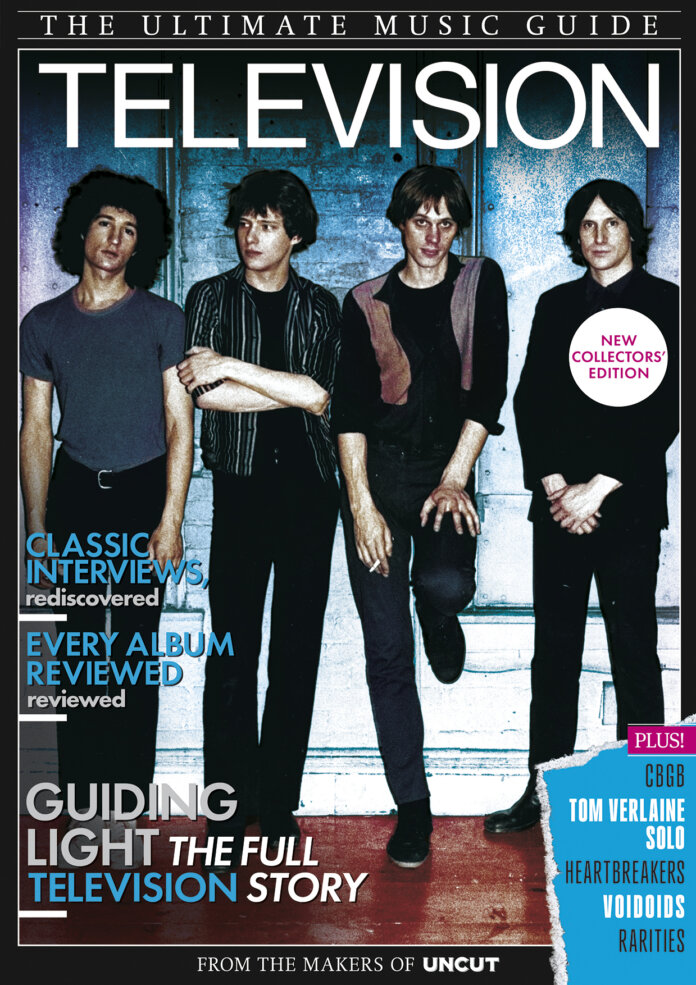Even before he left us for the last time, Tom Verlaine was a difficult person to locate. A couple of years ago, Uncut doorstepped his many friends and admirers in the hope of hearing a little about his present whereabouts, but only really hearing more about his unique talents. Getting on for 15 years before that, in 2006, we asked him face to face where he’d been since the last Television album in 1992.
Back then, he was presenting two new albums. One was song-based. The other was the lovely Around – a collection of noirish post-rock themes which sounded like signature tunes to a show about a guitarist/private eye who cultivates contacts in bookstores. At other times, it sounded like a one-man homage to exotica, all swaying slide guitar and pacific lulling.
Lovely as it all was, Uncut nonetheless wondered if this was really the work that had kept him out of circulation for all this time. Verlaine said no: his coffee pot had been broken, which had held him up for a while. Then there was the matter of a juggler friend who he had been helping with a circulatory issue – specifically, his veins.
Of course, juggler veins! It was a delightful, fittingly left-field, indication that this was still an artist that was following completely his own path. As you’ll read in this latest Ultimate Music Guide covering his work with Television and solo, Verlaine worked in his own way and at his own speed. Having never quite received the co-operation from the music business that he felt was warranted, instead of compromising, Verlaine went the other direction: bowed out, and become the most concentrated version of himself.
That might mean an album like Around where one could find the glacial arpeggios and exquisite sustain of his most famous records. It could be the guest spots with Patti Smith where Verlaine would sit at the back, and have his sound effortlessly elevate the music. But it could also mean serving up horrific puns, or teasing a Television album “about half done”.
The last time I saw Television it was to see them commemorate Marquee Moon in 2014. Rather than simply deliver the album as a foregone conclusion, however, Verlaine’s approach seemed to be to investigate the artistic process that had ultimately led the band to that highpoint. The evening began with the gentle sonorities of Tibetan prayer bowls, and a light modal jam. It included a garage rock cover version (“Psychotic Reaction” by The Count Five) and divergence into Television’s other history.
Maybe most impressively, the Television of 2014 didn’t just play the songs from //Marquee Moon//. Instead they investigated them, looking for new leads about where to take them next – a gateway to somewhere else. The gig was almost philosophical: to show how things might have gone if they’d made different choices. Thankful as we are for Verlaine’s talent and for the records you’ll read about in-depth in this issue, there’s a huge sadness that, as he puts it in “Prove It”, this case is closed.
Get your copy here…



